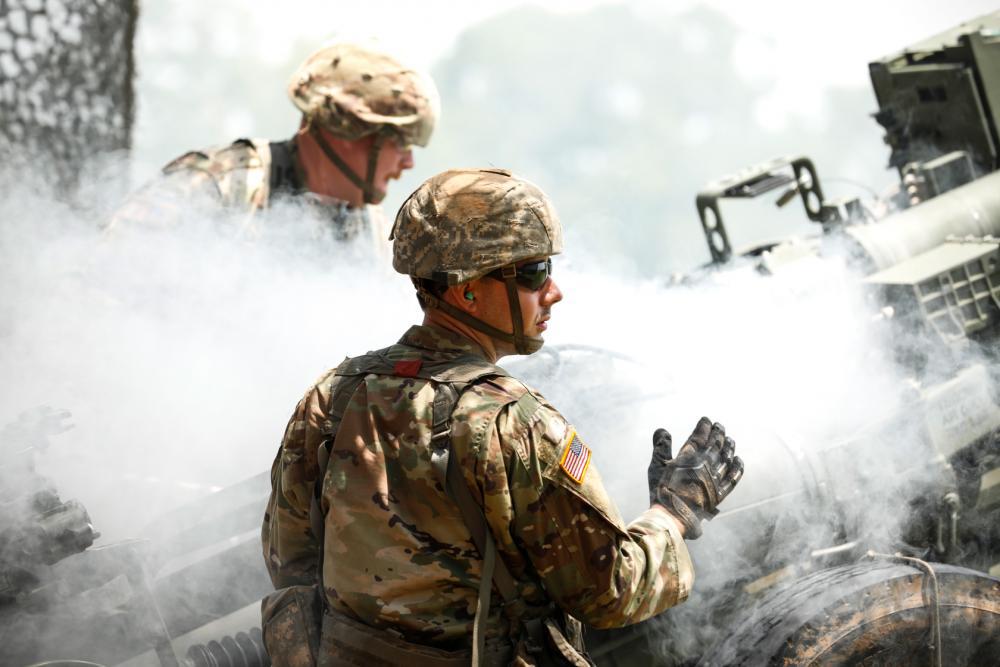The Army Harnesses Software Acquisition Pathways
The U.S. Army is getting capabilities to the battlefield quicker through its acquisition program called Software Acquisition Pathway. The approach is being applied to new programs or efforts, and so far, it has been an initial success, reported the Assistant Secretary of the Army for Acquisition, Logistics and Technology (ASA ALT) Doug Bush, speaking at a media event at the Pentagon on July 27.
“The Software Acquisition Pathway is something we're using for a lot of new programs we are starting,” Bush said, who began as ASA ALT in February. “It's not quite our [standard, but] it's close to a default at this point for new software efforts because we think that's the most modern way to do software development. That is what industry’s approach is, and we're getting a lot of encouragement from the Hill and others to pursue that approach for new things.”
The issue is applying new software creation approaches, such as development security operations (DevSecOps), to existing programs. “As we start new software programs, more of them are going to end up in the Software Acquisition Pathway as opposed to the traditional ones,” Bush clarified. “That is one way we're doing them differently, but I think the challenge is really the ones that were built a different way. And now we're trying to adjust them to the new model. But I think so far, we're finding success in most cases…. often it just requires rephasing, restructuring the program.”
The ASA ALT indicated that for existing capabilities, the Army may not take the time to move them into a new Software Acquisition Pathway, but instead tailor the software development approach as needed.

“[For] the old things, it is not really necessary to shift formally from one pathway to another, in most cases,” Bush stated. “That's a lot of administrative activity. I think we end up doing it de facto, meaning if we run into challenges with something, we go into a spiral approach where we're doing iterative capability drops versus the big bang approach or we're taking what was planned like a big bang fielding and then going to split it out into separate capability drops as those things mature. I think we're able to do that without shifting pathways formally.”
For its future autonomous vehicles, the Army’s approach is initially to develop a software platform—through the Software Pathway Acquisition effort—that supports more than one vehicle, the ASA ALT explained. For example, with the Robotic Combat Vehicle-Light (RCV-L), the service is splitting the efforts between the vehicle development and the autonomous solutions that are needed. The Army is tackling those solutions first before moving on to other autonomous vehicles, such as the larger RCV-Medium effort.
“We have chosen to focus on the RCV-L platform, the smaller platform, and also within that, we have separated out the software element as a separate Software Acquisition Pathway program because we want that control software to be common across many robotic platforms,” Bush noted. “The Army is still of course interested in robots of many different sizes, but we're focusing on RCV-L because we think that's a necessary first step before going to larger platforms.”
So far, five months into his role, Bush is pleased with the Army’s acquisition efforts for the almost 500 programs of record and is seeing success in the service’s initial efforts in preparing for near-peer warfighting. “From from my vantage point, Army modernization efforts right now are in great shape,” he said. “This year we've had success after success after success. Not everything's perfect, but right now things are really in a good place, I believe. The Army is showing it can and will succeed with its modernization plans, and we continue to build momentum for the future.”
As examples, Bush cited how the Mobile Protected Firepower effort is entering low-rate reproduction just four years after it was initiated and how the Next-Generation Squad Weapon completed rapid prototyping and fielding after three years.
In his role as science advisor to the secretary of the Army, Bush reported that he is not straying too far from the research and development blueprint prepared by his predecessor and other Army leaders, including Gen. Mike Murray, USA, former commander of Futures Command, newly retired. The future technologies those leaders identified—such as quantum, hypersonics, robotics, automation—will continue to be acquisition priorities.
Additionally, the acquisition leader will continue to look to the Army’s Software Factory as a way for the service to improve its software efforts. “The Software Factory is a pilot program…. It is technically a training activity, for training people,” Bush noted. “It is part of a future effort to just get the Army better at software, broadly speaking.”
Lastly, Bush noted there are planned replacement options for M777 Howitzers, as the United States has provided this key artillery capability to Ukraine—and there is no longer a production line building them for the U.S. Army.
“We produced what we needed,” he said. “We fielded it. There are production activities that make spare parts though. For example, so we can still produce barrels, we can still produce repair parts necessary to just maintain the system. So, the Army is on a case-by-case basis when we send something to provide something to an ally. [We are] looking at whether we buy exactly the same thing again or if we buy something new [to replace the M777]. We're not required, for example, to buy exactly what we sent. We have some flexibility to buy new if a newer thing is in production. I can't talk specifically about what we're going to do to replace those. We have a plan to replace the capability, but I can't give you the details.”






Comments